I don’t know why it took us so long to get around to visiting Vicenza.
Actually, I do. It was ten years ago when we were first in those parts, and we were in the grip of a bad case of medieval snobbery, and weren’t prepared to look at anything built after about 1450. I blame John Ruskin.
Nowadays we are much more broad-minded and are prepared to embrace quite modern stuff, up to about 1600. And Vicenza is essentially a late-Renaissance city. In fact it is irrevocably associated with one great architect – Andrea Palladio – who gave his name to a whole style of architecture. Palladian architecture takes the idea of a classical Roman temple and applies it to churches, country houses, council chambers, bank offices, you name it. And since his architecture was much admired by British gentry doing the “Grand Tour” of Italy, he influenced many British architects such as Christopher Wren and Inigo Jones.
Palladio was a local boy who got his big start when he won a competition to design a new façade for the basilica in Vicenza. Over time he more or less cornered the market – in Venice he got commissions to design churches like the very famous San Giorgio Maggiore which features in a million gondola shots, and in Vicenza he did palazzi in town and villas (i.e. large country houses) in the surrounding countryside.
In those days Vicenza was in one of the wealthiest parts of Italy (indeed it still is) and wealthy Venetian families built villas round here to spend time in summer or during disease outbreaks. They got Palladio to design them, or if they couldn’t afford him, one of his cheaper imitators.
We were staying in the hills south of Vicenza. To the north, the alps rise up quite suddenly, steep and rugged. To the south is the flat Po Valley, but there are a couple of lumps which are outliers of the alps. One lump is the Euganean Hills which are reasonably well-known in English literary writing, partly because the Italian medieval poet Petrarch retired there. You can still visit his house, which we did; rather bizarrely it contains a mummified cat which is claimed to have been Petrarch’s own pet. The other reason the Euganean Hills are a bit famous is that the poets Byron and Shelley, during their time in Venice, repaired there in summer when the heat and stinks got too much. In those hills, Shelley wrote a magnificent elegiac poem about the state of Italy as seen through early 19th-Century Romantic eyes, with hope for its regeneration. Byron, more practically, sent his illegitimate daughter to live there in the healthier climate.
Beneath is spread like a green sea
The waveless plain of Lombardy,
Bounded by the vaporous air,
Islanded by cities fair;
Percy Bysshe Shelley – “Lines Written Among the Euganean Hills”
The other lump of leftover alps is the Berici Hills, and it was there that we were staying, in the grounds of an old manorial farm which still produces its own wine and oil. The air is clearer and cooler up above the plain (Byron and Shelley were right!) and it is a pretty, rolling landscape which produces a lot of fruit and some impressive wine. Apart from a sprinkling of Palladian villas, a distinctive feature of the landscape is that most of the villages possess very tall and slender campanili, usually in pastel colours. The overall effect is of tidy elegance and discreet wealth. There are a good many cherry orchards, and since we were there in season, there were lots of signs saying vendita ciliegie (cherries for sale). We stopped at a particularly picturesque one where a couple of friendly old ladies were sorting cherries into punnets beneath a campanile on the hill behind. Lou bought some cherries and declared them a memorable experience, for all the right reasons.
Getting into Vicenza by car was not hard – we found an underground car park on the edge of the old town, and continued on foot. We wandered down the main street (now somewhat unnecessarily renamed the Corso Andrea Palladio) which has some excellent cafes, and took a detour down to the main square to see the basilica that started it all, now renamed the Basilica Palladiana – anyone would think they were proud of the chap. This looks onto an extensive piazza surrounded by more excellent cafes, where locals meet and chat on Saturday mornings.
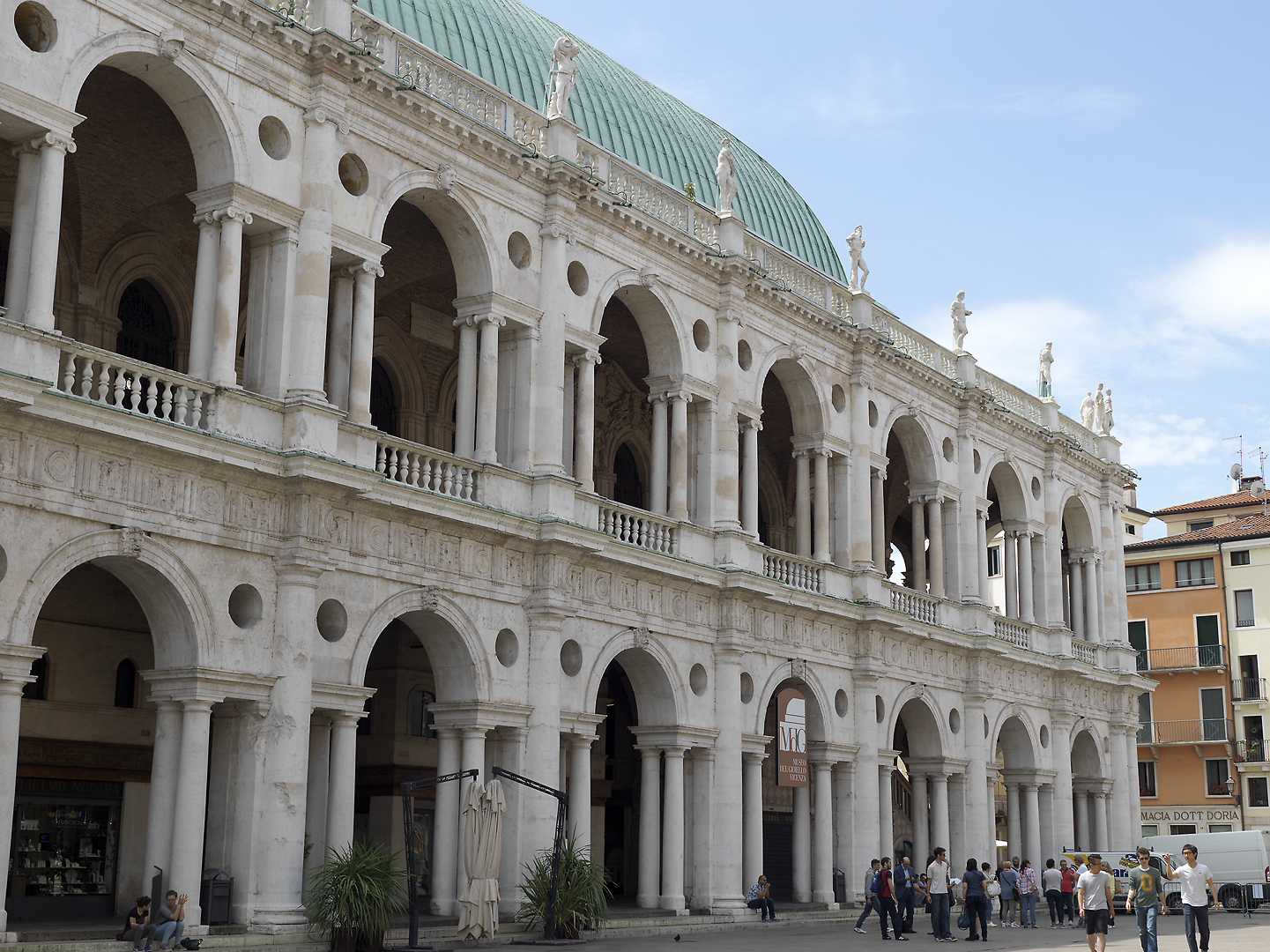
There are quite a few Palladian and sub-Palladian places in the town, but also a good bit of older Venetian Gothic that Palladio didn’t get to modernise. Vicenza was part of the Venetian Empire for a long time so not only is some of the architecture very reminiscent of Venice, but there are winged lions of St Mark in various places, including on a column in the main square. Napoleon took most of the lions down as a symbol of liberation from servitude, however as soon as he had gone the citizens put many of them back, which shows how they felt about it.
We had a major objective in mind – the celebrated Teatro Olimpico (Olympic Theatre). Note that this has nothing to do with the Olympic Games which had to wait another four hundred years to be revived. No: its name, and its fame, derive from the fact that (a) it was the first attempt in the Renaissance to create a space for theatrical performance as a form of high art as in Ancient Greece, (b) it was the first covered theatre ever built, (c) it was designed by the boy himself, Palladio, although he died before it was completed, and (d) it has a celebrated false-perspective stage set designed by Vincenzo Scamozzi to represent a street in Thebes – doubtless in order to put on the plays of Sophocles. This, although only a few feet deep, looks to be much longer than that. If you were to walk to the back of the “street”, you would be walking up a slope and when you got to the end you would look like a giant. The Renaissance was fascinated by perspective, in pictures and in sculpture, because it was the first time (again, since antiquity) that it was possible to show that you could describe the real world through mathematics, thereby suggesting that there was an underlying natural order waiting to be discovered. It is not a coincidence that the first name for Physics, when it emerged as a distinct academic discipline, was “natural philosophy” – the description of nature by the application of intellectual theory.
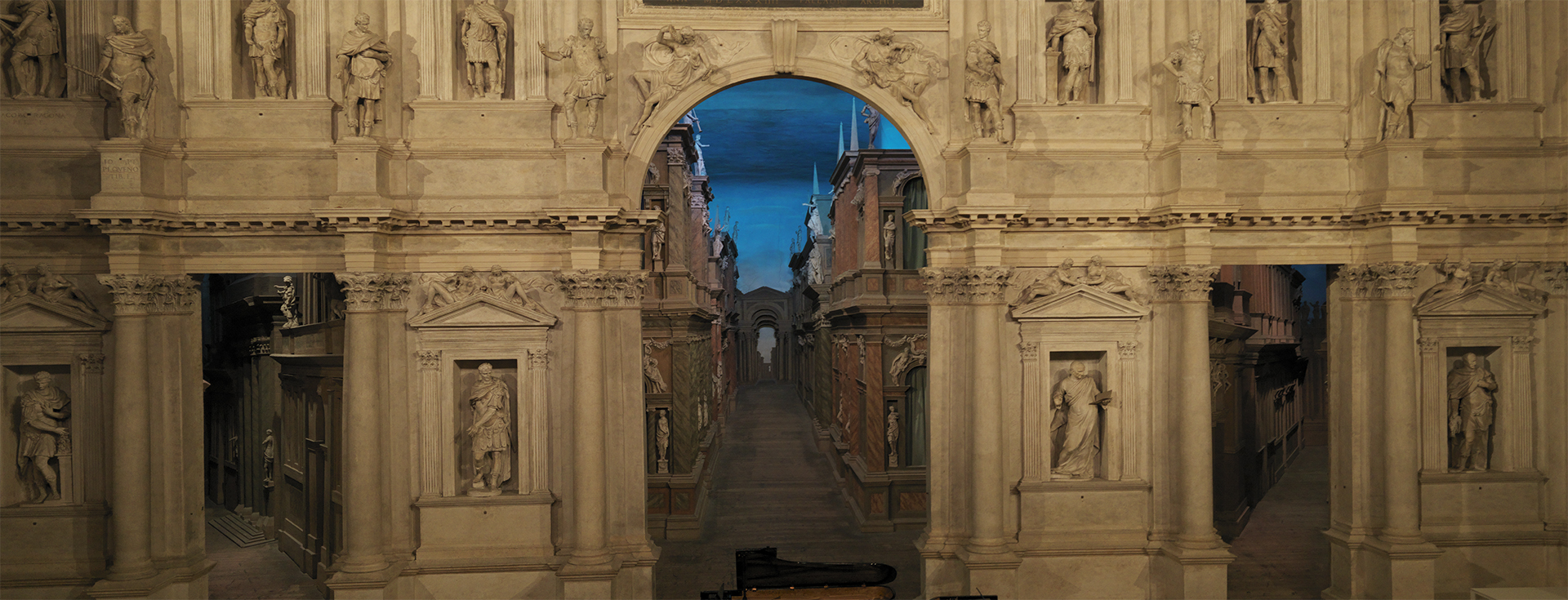
Just how advanced all this stuff was is brought home forcibly when you look at this highly sophisticated building and reflect that it is contemporary with, or even slightly predates, the half-timber and thatch affair that was Shakespeare’s Globe Theatre in London, with which we are all familiar from schoolbook illustrations, and the modern replica.
As we approached the main theatre we were just congratulating ourselves that we had beaten the crowds, when a side door opened and a tour group of elderly Italians speared in, led by a voluble tour guide. Since most of the group were in their late hundreds it was relatively easy for us to pick our way through them and climb up to a clear space where we could enjoy the view while the guide held forth below.
After a while another tour group arrived – this one a group of Italian adolescents led by an equally determined tour guide – one moreover who was inspired by the sacred calling of pedagogy and who obviously considered herself a cut above a mere tourist-wrangler. As the first tour guide continued her peroration and the adolescents checked their phones, the second guide stood by, looking at her watch and adopting increasingly theatrical poses of impatience. It was clear that things were going to get ugly and Lou and I started edging for the exit. Eventually guide #2 enlisted the aid of one of the museum officials who intervened loudly – guide #1 responded not by curtailing her spiel but by redoubling the speed and volume of delivery, which had a few of her charges checking their hearing aid settings. We made our escape.
Our next port of call was the nearby Palazzo Chiericati – a museum of art and sculpture run by the city council in an authentic 16th-Century Palladian building. Our initial impressions of the collection were a bit qualified – there was some late 17th-Century sub-Caravaggio chiaroscuro stuff on biblical themes and a few so-called veduta di fantasia paintings. This was a genre which specialised in pictures of imagined ruins, usually with a few people in the foreground striking poses. These pictures got churned out in their hundreds to sell to wealthy tourists, and like statue-busking, the first person to do it was pretty original, and the rest weren’t. After that there was – inexplicably – a collection of unremarkable books and amateur photographs left to the city by a 20th-Century aesthete. As we left each room we tried to head for the exit, only to be intercepted by an enthusiastic official and ushered on to the next part of the tour. The guards took their responsibilities very seriously and were keeping in touch with walkie-talkies: “two tourists heading for the top floor: make sure they don’t escape without seeing the collection of 1960s road maps”. In the basement there was some anodyne modern sculpture.
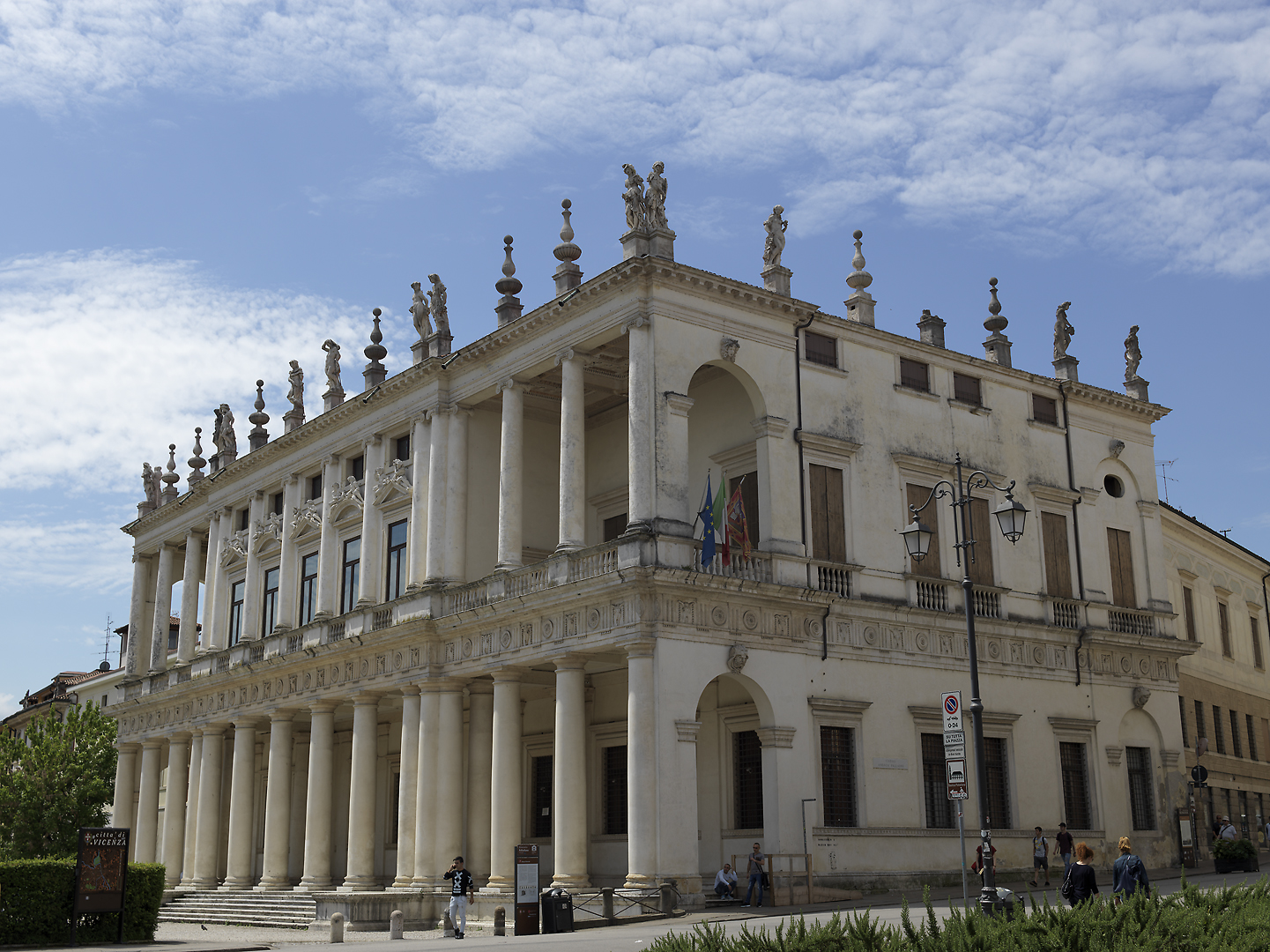
These impressions, however, did not do full justice to the place, as we were shortly to find. When we finally made it back to the foyer we were making a beeline for the exit but the chief attendant leapt out from ambush and with an air of triumph shepherded us into the last couple of rooms. And we were very glad she had, because it was by far the best bit: rooms with very elaborate ceiling frescoes of mythological scenes, all painted from a bottom-up perspective which is an apt description as it was often an excuse to show the rude bits. The obvious pride in the collection shown by the attendants proved quite justified, and is something we have seen many times in Italy.
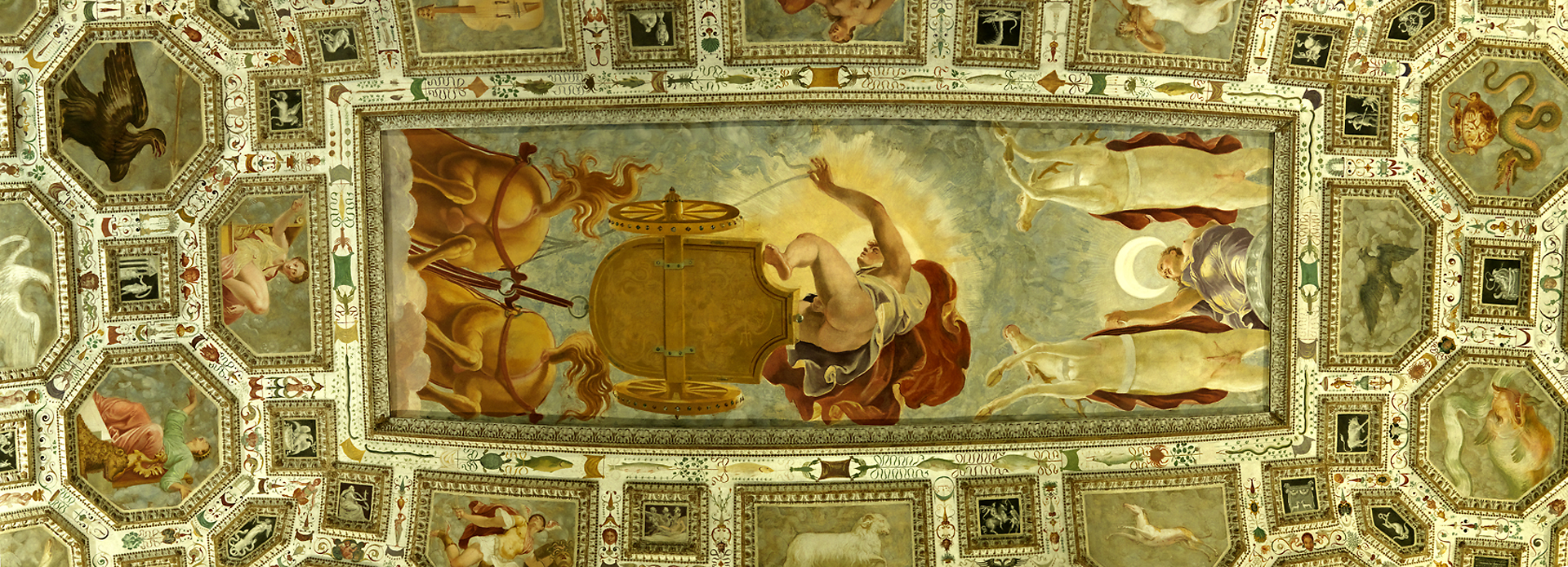
A summer thunderstorm broke and, umbrellas up, we dodged from arcade to arcade to get to the next museum which is the official Palladio Museum and which might a bit too funky and edgy for some tastes. There are lots of lighting displays and wall projections, clearly intended for the short attention-spans of the social-media generation. Nonetheless it had a number of very excellent plywood scale models of Palladio’s villas, palaces and churches, some with cutaways, which explained quite a bit about his design principles and gave one the sense of having collected a larger set than we had seen in real life.
There are many excellent places to eat in Vicenza, but one place we returned to was “Osteria Al Ritrovo” which is in Piazzetta del Duomo. Lou had one of the house specialties: saor dishes of prawns, cuttlefish and sardines, followed by a fish called orata, cooked with olives, tomatoes and potatoes, which she pronounced to be excellent. I had asparagus and local cheese on toast with prosciutto, followed by pasta with finferli (chanterelle mushrooms). Earlier we had aperitivi in the “Gran’ Caffè” in the Corso Andrea Palladio, which is grand indeed, with elegant pale green décor and many equally elegant old ladies.
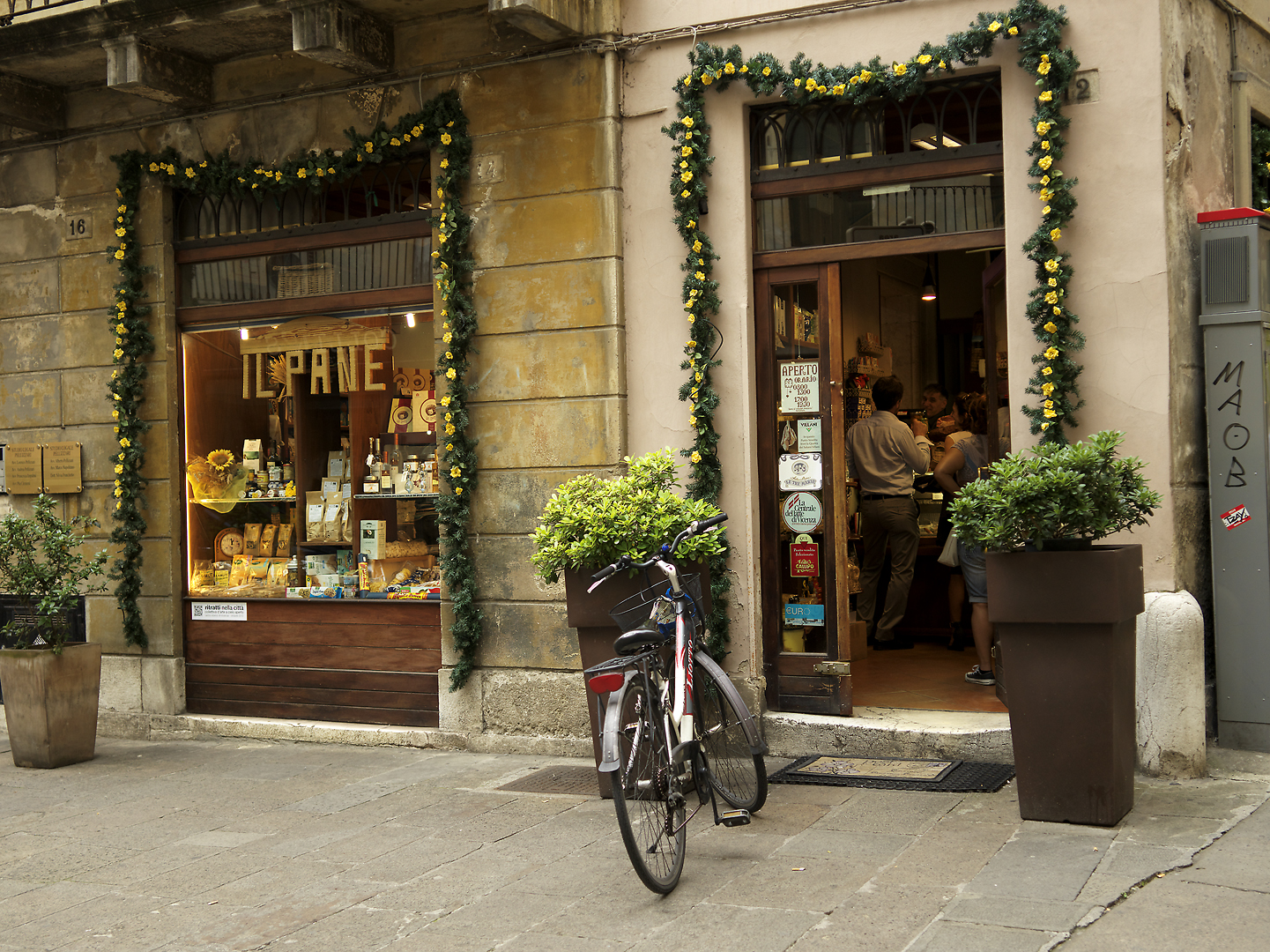
Elegance is something of a theme in Vicenza – elegance and self-confidence. Not unlike the architecture of Palladio, come to think about it.

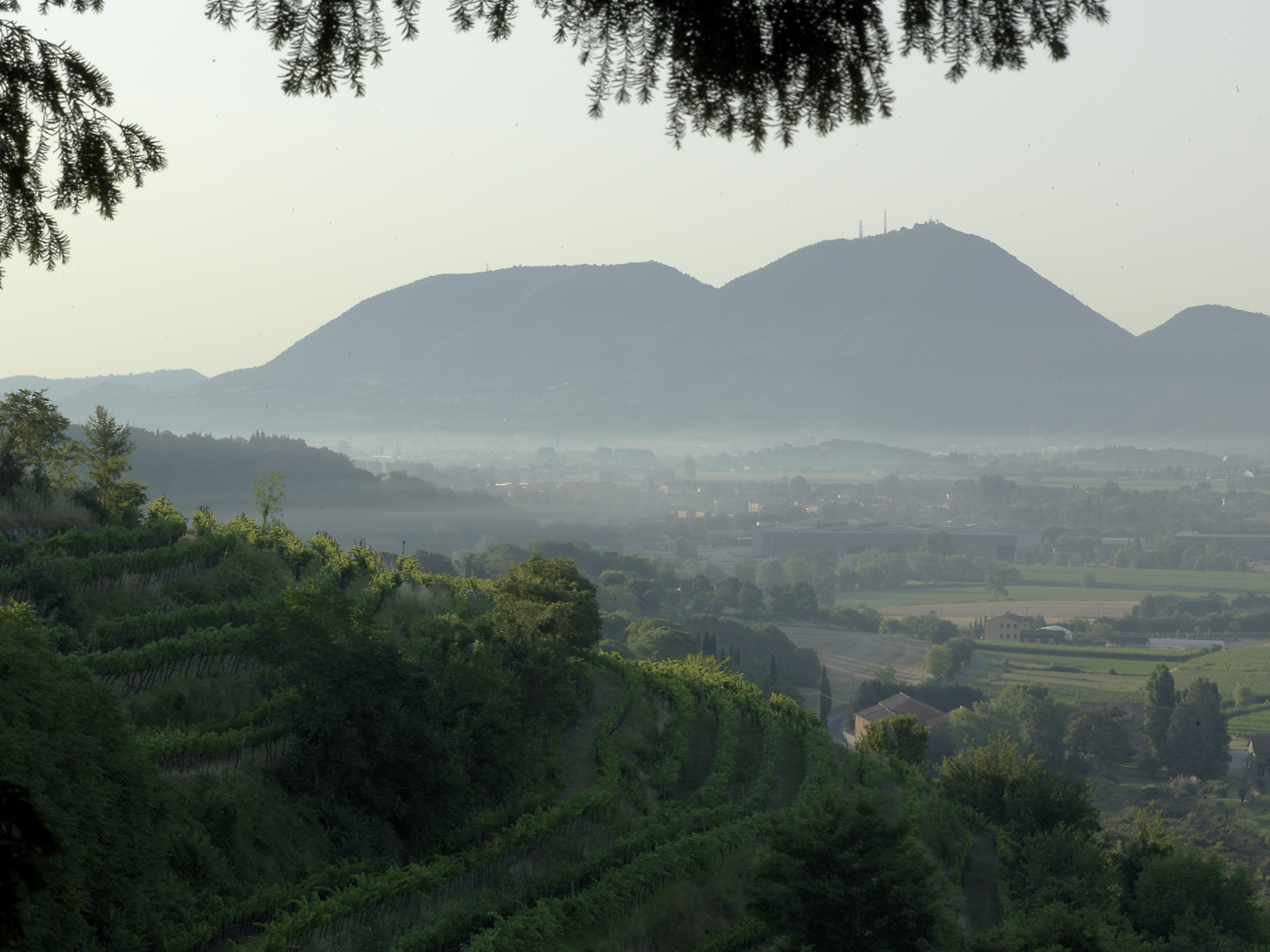
One Reply to “Vicenza Virgins”